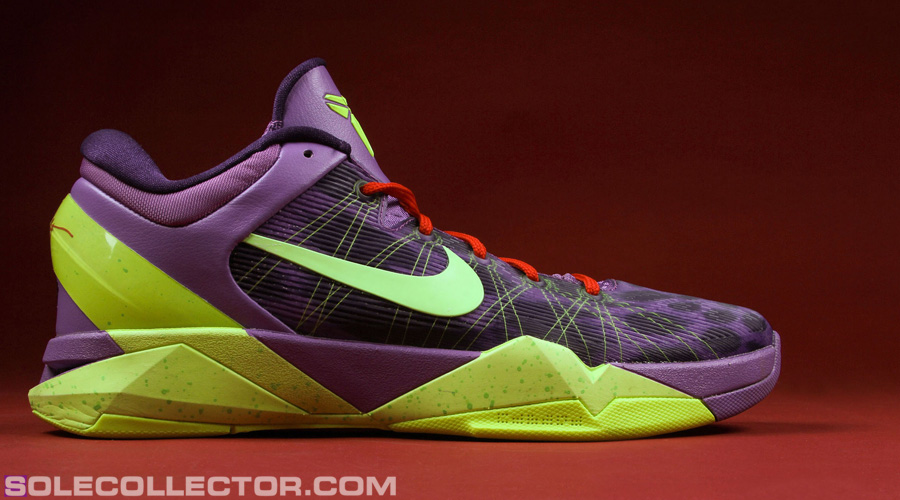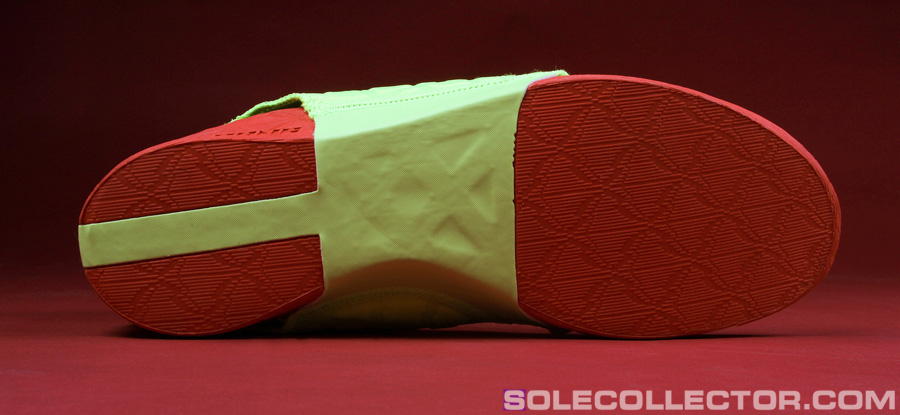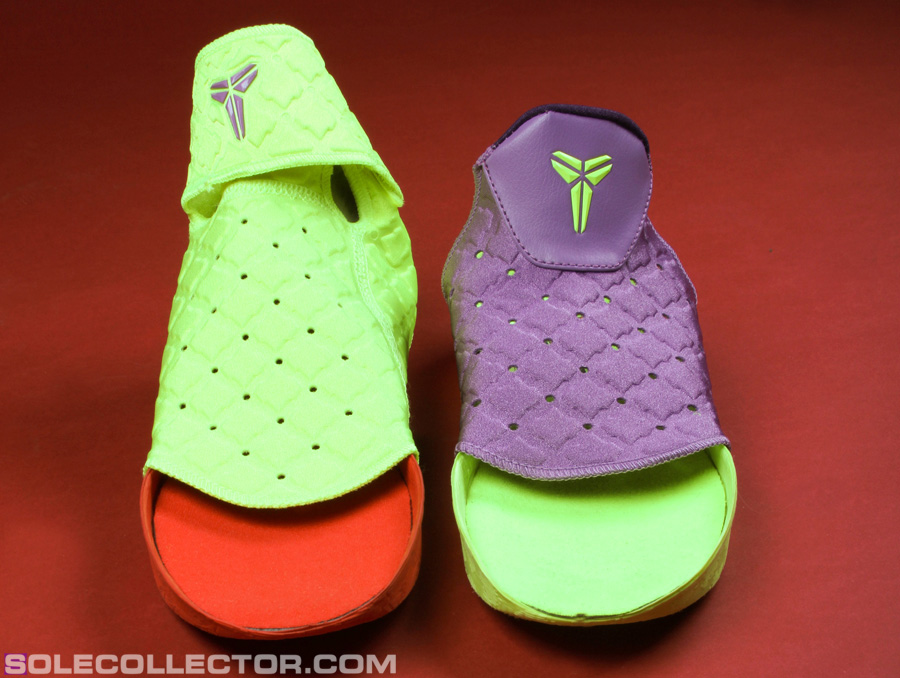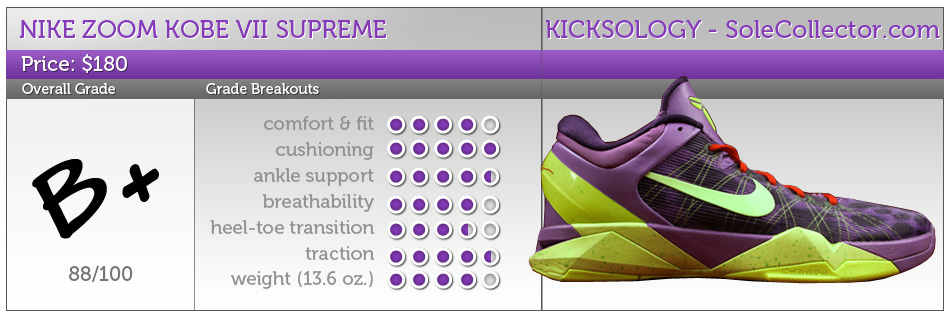
Two Isn’t Always Better Than One
words & images // Nick DePaula
The Kobe VII is a polarizing shoe for me. All I’ve been asking for from the Kobe line for the past two years was a herringbone traction pattern, heel Zoom Air and a full-wide forefoot Zoom Air unit. That was it. They could literally carry over every other element from the Zoom Kobe V and VI and the result would be one of the best-playing basketball shoes of all time. The lockdown, lightweight, transition and court feel were already there.
The good news is that every last thing I asked for was incorporated into the VII. The only problem is, I got even more than I asked for in the form of quite a convoluted modularity story, and that’s where my issues with the Kobe VII began.

While the shoe’s “Kobe System” ad campaign targeted a pretty mass audience, thanks in part to quite a few wide-ranging and diverse celebrity cameos, the actual componentry and sneaker itself are rather complex to digest. The two interchangeable midsole options the “Supreme” version is offered with isn’t an entirely new concept, as it first debuted on last year’s Air Jordan 2011. The difference with the Kobe VII is that not only is the midsole interchangeable, but there’s also an affixed tongue option that slides right on out with it. There’s a traditional (for the Kobe series at least) tongue height and Phylon-based “Play Fast” midsole housing a 14 mm Zoom Air unit in the heel and a full-wide 6mm Zoom bag up front. And then there’s a “Play Strong” midsole made of full-length Cushlon that comes along with a Velcro-strapping neoprene quarter sleeve. The concept of “attacking strong” versus “attacking fast” is kind of lost on me in terms of which version might be better suited for such a style of play, but understandably there’s a huge noticeable difference right away between the two midsoles from a cushioning standpoint.
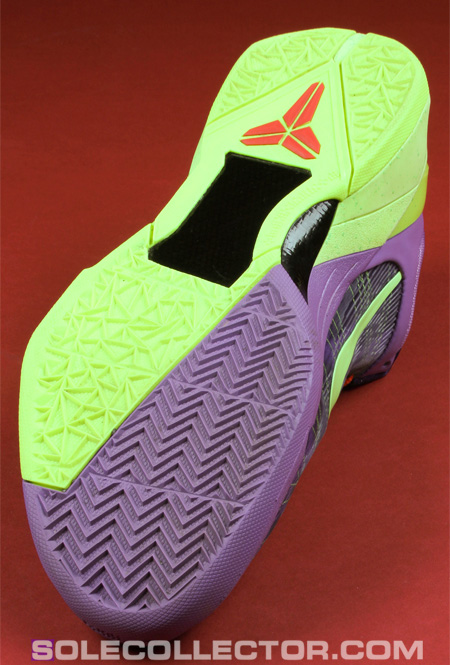 Over the past two months, I absolutely preferred the Zoom-based “Fast” midsole, mainly because of its more responsive and targeted cushioning. The “Strong” midsole is soft to the step (though the sleeve isn’t quite casual friendly), but in a game of high-paced basketball, there was never really a perceived bounce and comfort quite like what Zoom Air allows for. The cushioning in the “Fast” midsole ended up being one of the shoe’s bright spots, but it’s definitely worth pointing out that each midsole absolutely will take you at least two nights of games to break in. Because of the non-traditional construction and the fact that the cushioning is housed directly in the sockliner, as compared to underneath the footbed in most other fixed-midsole shoes, the sockliner itself is by most standards humongous and feels extremely thick and stiff through the midfoot the first time out. The firmness only gets slightly better on day two, and over time the shoe will begin to soften and break in better.
Over the past two months, I absolutely preferred the Zoom-based “Fast” midsole, mainly because of its more responsive and targeted cushioning. The “Strong” midsole is soft to the step (though the sleeve isn’t quite casual friendly), but in a game of high-paced basketball, there was never really a perceived bounce and comfort quite like what Zoom Air allows for. The cushioning in the “Fast” midsole ended up being one of the shoe’s bright spots, but it’s definitely worth pointing out that each midsole absolutely will take you at least two nights of games to break in. Because of the non-traditional construction and the fact that the cushioning is housed directly in the sockliner, as compared to underneath the footbed in most other fixed-midsole shoes, the sockliner itself is by most standards humongous and feels extremely thick and stiff through the midfoot the first time out. The firmness only gets slightly better on day two, and over time the shoe will begin to soften and break in better.
My biggest issue with the VII is the fact that it relies on a modular midsole when it’s so very obvious that a fixed midsole would provide better play right out of the box, better transition, improved court feel and lighter weight. The Zoom Kobe VI was about as nimble as it gets and weighed only 10.6 ounces in a size 9. This year, the shoe has gone surprisingly backwards in weight, clocking in at around the 13.5-ounce mark, depending on which midsole you go with. That’s a huge sacrifice in weight for a low-top sneaker, and it comes along with a sacrifice in transition and court feel. I’m not sure it’s worth it for the ability to switch between two midsoles.
Mostly because, and I think this is likely the case for nearly everyone, there’s going to be a midsole you prefer between the two, and you’ll never even use the other. That was my experience playing in the Air Jordan 2011, and it was no different here. After three weeks, I felt more confident in the lockdown and cushioning provided by the “Play Fast” midsole, and I simply never went back to the “Play Strong” version. I didn’t particularly care for the “Strong” sleeve either, as my foot never felt precisely secure and there was sliding within the shoe at times. If it weren’t for the sake of comparison and writing this performance review, I would’ve played in the “Strong” midsole even less than I did. Is it worth $180 to find out you don’t quite care to play in both midsoles and would rather stick with one? That’s a hard recommendation to make.
Luckily, there isn’t just the $180 version of the Zoom Kobe VII available at retail; several other colorways of the shoe are now releasing that include the “Fast” midsole for the price of $140. Of course, a fixed-midsole version of the VII would definitely be preferred at that price, but then you wouldn’t be able to switch tongues between colorways, or perhaps hop onto NIKEiD.com and customize your own midsole and tongue combination. The VII is an extremely capable performer and has a lengthy list of positives that hardly any sneakers are currently competing with, but it’s fairly safe to say that the modularity concept is driven by marketing more so than performance, and that’s just one of those realities of life and business that sometimes overtake the story. I’d love to see a more straightforward approach for the Kobe line – which has up to this point been strictly performance-centric – going forward as the series progresses.
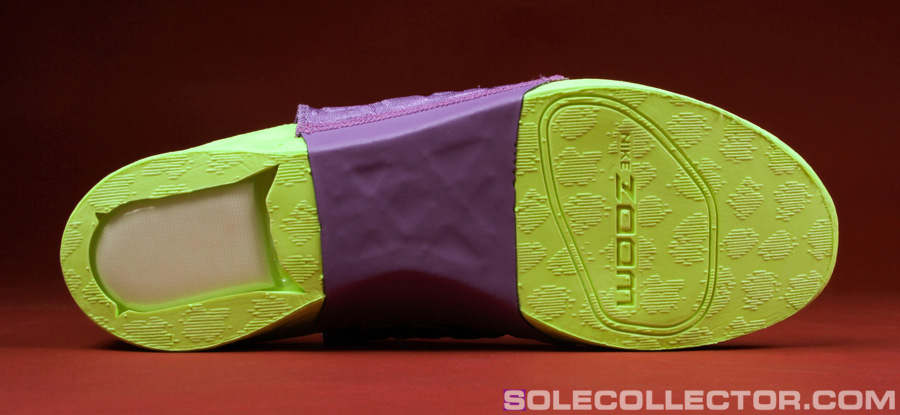
Above: A look at the "Play Fast" midsole.
While the modularity concept presents a few issues that I, and everyone I know currently playing in the VII, faced, nearly every other facet of the shoe ranks highly on my list. The traction, while not offering any perceptible squeak, holds well on even the most suspect of courts and works great with the shoe’s sizable outrigger. A softer durometer and stickier rubber would’ve helped even more, but the hold and reassurance is still great for a slashing style of play.
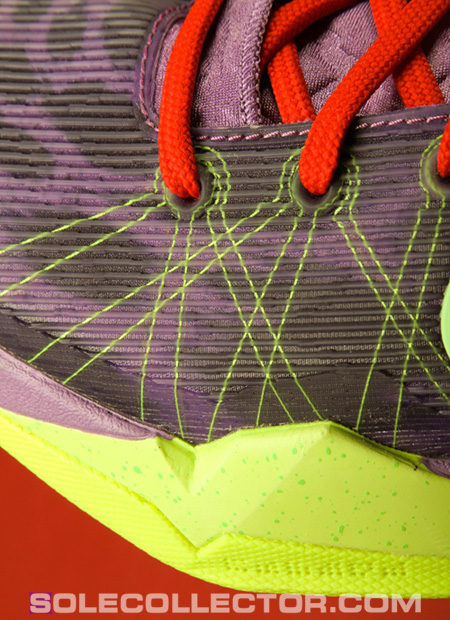 Another aspect of the shoe that I really liked was its lockdown. Flywire once again makes up the upper, anchored to the shoe’s eyestay and housed in a hotmelt panel of mesh and pliable synthetic similar to what was found atop the Kobe VI. When using the “Fast” midsole, the tongue is well positioned, and thanks to a nicely contoured midfoot fit, a beefy exposed TPU heel counter and a straightforward lacing system, you’re harnessed right into place. I think the fit and lockdown are much improved from the VI, as some people didn’t feel the heel counter covered enough area to really hold you in. Along with both the cushioning and lockdown, the overall support was once again right on par with the industry-leading Zoom Kobe models of years past. There’s a nice blend of lateral support, traction and lockdown throughout the whole shoe that holds you right over the footbed all game long.
Another aspect of the shoe that I really liked was its lockdown. Flywire once again makes up the upper, anchored to the shoe’s eyestay and housed in a hotmelt panel of mesh and pliable synthetic similar to what was found atop the Kobe VI. When using the “Fast” midsole, the tongue is well positioned, and thanks to a nicely contoured midfoot fit, a beefy exposed TPU heel counter and a straightforward lacing system, you’re harnessed right into place. I think the fit and lockdown are much improved from the VI, as some people didn’t feel the heel counter covered enough area to really hold you in. Along with both the cushioning and lockdown, the overall support was once again right on par with the industry-leading Zoom Kobe models of years past. There’s a nice blend of lateral support, traction and lockdown throughout the whole shoe that holds you right over the footbed all game long.
The Zoom Kobe VII might’ve scored well in nearly every category to on paper receive an A grade, but there’s just something about the firmness of the midsole, the added weight and the reduced nimbleness that comes with it that holds it back for me. I wanted to love it so very badly, and perhaps that’s because when I first learned it incorporated both heel and forefoot Zoom Air and a herringbone traction pattern, my expectations were exceptionally high. To put it simply, they just didn’t live up to the bar I had in mind. Were it not for the modular midsole system, perhaps they would’ve.
Grade Breakout:
designed by: Eric Avar
best for: Guards and forwards
colorway tested: Black / White / Del Sol
key tech: interchangeable “Play Fast” and “Play Strong” midsole system with full-length Cushlon or heel and forefoot Zoom Air, depending on modular preference; herringbone traction pattern, Flywire upper, glass fiber midfoot support shank, molded heel counter, vented neoprene tongue sleeve
pros: outstanding cushioning, lockdown and support, solid traction for most courts
cons: expensive (if a bit gimmicky), midsole are difficult to switch in and out, required break-in period, heavier than previous Zoom Kobe models
improvements: fixed midsole would make a world of difference; herringbone traction pattern could be stickier, but still holds sufficiently.
buying advice: The Zoom Kobe VII offers tons to be excited about, like great cushioning, lockdown, support and traction. Unfortunately, it gets a bit overzealous in its offerings and the modular midsole system perhaps does more harm than good. There’s a required break-in time and not quite the ideal court feel that we’ve come to expect from the Kobe line. Grab them as your next playing shoe if you want maximum cushioning, support and lockdown, but aren’t after the lightest or smoothest flexing sneaker.
